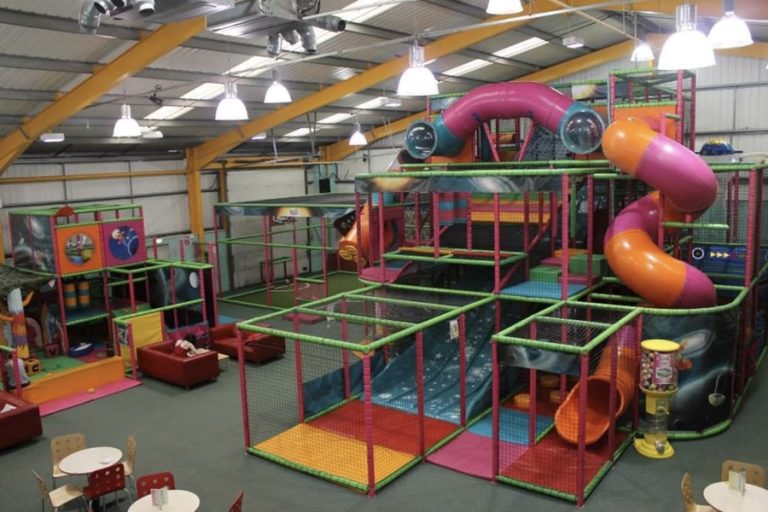For car owners, timely access to replacement parts is essential for keeping vehicles in optimal condition and ensuring reliability. Mazda, a popular choice among UAE drivers, has built a reputation for quality and performance. However, certain Mazda parts are more difficult to find than others. Various factors—including global supply chain issues, parts specific to particular models, and local market dynamics—contribute to these difficulties. This article will explore the primary reasons why some Mazda parts are harder to source, offering a clear understanding of the automotive parts market in the UAE.
Variations in Part Demand Based on Model Popularity
In the automotive industry, demand for parts typically aligns with the popularity of specific vehicle models. Mazda models like the Mazda3 and CX-5 are highly favored in the UAE, leading to a steady availability of commonly replaced parts for these vehicles. However, parts for less popular or older models may be harder to source, as local distributors focus their stock on higher-demand models. When specific models have limited market reach, local suppliers may hesitate to keep extensive inventories, prioritizing fast-moving parts over less in-demand items. This market-based supply approach can cause delays or shortages for those seeking parts for less popular Mazda models.
Limited Availability of Parts for Older Mazda Models
As car models age, the availability of parts tends to decrease. This is due in part to Mazda’s phased production strategy, where manufacturing resources are reallocated toward new models over time. While OEMs (original equipment manufacturers) may continue producing parts for older models, these parts often become available only through specialized distributors or aftermarket sources. In the UAE, where a large segment of Mazda owners drive newer models, distributors are less likely to stock parts for older vehicles. Consequently, owners of older Mazda models may experience challenges in finding replacement parts locally, as importation or special orders become necessary.
Supply Chain Disruptions and their Effects on Part Availability
The global supply chain for automotive parts has experienced notable disruptions in recent years, impacting the availability of Mazda parts. Factors such as factory closures, reduced production capacities, and transportation delays have all contributed to periodic shortages. For instance, semiconductor shortages have affected the production of certain electronic components, which are essential in modern Mazda vehicles. These disruptions are especially evident in the UAE, where reliance on imports makes the local market vulnerable to global supply fluctuations. As a result, Mazda UAE dealerships and independent suppliers may face delays in replenishing stock for specific parts, leading to longer wait times for consumers.

The Role of Exclusive Parts and Proprietary Components
Mazda, like many automakers, designs certain proprietary components that are specific to individual models or series. These components, which might include advanced engine parts or unique electronic systems, are often produced by limited suppliers, making their availability more restrictive. Unlike generic parts, which can be sourced from multiple manufacturers, proprietary Mazda parts require specialized manufacturing processes and licensing. This exclusivity can lead to supply constraints, especially for advanced features or technologies that are unique to Mazda vehicles. For UAE consumers, these factors mean that specialized parts may be harder to source, particularly if only select dealerships have access to exclusive Mazda components.
Import Restrictions and Customs Regulations in the UAE
Import regulations in the UAE add another layer of complexity to the availability of Mazda parts. The country enforces strict customs policies on automotive imports, including spare parts, to ensure compliance with local standards and safety requirements. Some Mazda parts may face delays in customs clearance or be restricted altogether if they don’t meet UAE’s specific regulatory standards. Additionally, the import process often involves taxes and fees, which can influence the price and availability of parts in the local market. For certain components, particularly electronic or performance parts, these regulatory hurdles can create delays and limit availability.
Impact of Currency Fluctuations and International Pricing on Part Costs
Currency fluctuations and global pricing shifts also impact the availability of Mazda parts in the UAE. As the dirham is pegged to the U.S. dollar, any changes in the yen-dollar exchange rate affect the import cost of Mazda parts from Japan. This variation influences how local distributors price parts, which in turn affects purchasing and stocking decisions. If prices rise significantly due to currency shifts, suppliers may reduce inventory or increase prices, making parts more difficult to source affordably. This economic factor can lead to temporary shortages for parts deemed too costly to import, directly impacting UAE-based Mazda owners.
Differences in Aftermarket and OEM Parts Availability
In the automotive parts market, there is a distinction between OEM (original equipment manufacturer) parts and aftermarket parts. Mazda UAE dealerships typically offer OEM parts, which are manufactured by Mazda or its authorized suppliers and are exact replacements for the original components. However, these parts may have longer wait times or higher costs due to exclusive sourcing requirements. In contrast, aftermarket parts are produced by third-party manufacturers and can sometimes be found more readily. Yet, not all aftermarket options are available for every Mazda model, particularly for specialized or less common parts. The limited presence of certain aftermarket parts contributes to the scarcity of components for specific Mazda vehicles.
The Impact of New Model Releases on Parts Production
When Mazda releases new models, production priorities often shift to support the latest designs and technologies. This shift can result in reduced production for parts associated with older models, as manufacturing resources are allocated to new components. Newer models typically feature advanced technologies and revised designs, requiring unique parts that may not be compatible with earlier models. For UAE Mazda owners with older vehicles, the introduction of new models may reduce the availability of replacement parts, as factories focus on parts for recent releases. This production shift can leave older-model owners waiting longer for essential parts.
The Effects of Digitalization and Direct Sourcing on the Parts Market
Digitalization in the automotive parts industry is enabling more direct sourcing channels, where consumers can order parts directly from manufacturers through online platforms. While this trend offers new avenues for accessing Mazda parts, it can also create disparities in availability between traditional dealerships and online sources. In the UAE, the growth of e-commerce has expanded access to certain parts but remains limited for specific models and proprietary components. Although online ordering provides an alternative for parts that are difficult to find locally, the process often involves international shipping fees and import taxes, which can offset the benefits of direct access.

How Local Dealership Policies Affect Parts Inventory
Each dealership operates with its own inventory policies, influenced by market demand and corporate guidelines. Mazda dealerships in the UAE may focus on fast-moving parts, such as filters, brakes, and other routine maintenance components, while maintaining lower stocks of specialized or rarely requested parts. In cases where local demand for a particular part is minimal, dealerships may rely on order-based systems, where specific parts are ordered only when requested. While this approach reduces inventory costs for dealerships, it can lead to delays in obtaining less common parts, affecting availability for Mazda owners who require specific components.
Increased Demand for Parts in Expanding Used Car Market
The UAE’s thriving used car market has increased demand for replacement parts, particularly for well-maintained Mazda models that attract buyers seeking quality vehicles at competitive prices. As the used car market expands, parts for popular Mazda models see higher demand, while parts for older or niche models may become harder to source. This growing demand for specific components can lead to inventory prioritization for high-demand models. The UAE’s used car market trends thus influence the availability of parts, as suppliers and dealerships allocate resources based on the popularity and turnover rates of particular Mazda vehicles.
Conclusion
Mazda owners in the UAE may face challenges in sourcing certain parts due to a combination of factors, including model popularity, supply chain issues, exclusive components, and regulatory constraints. Understanding these factors can help Mazda owners make informed choices when seeking parts, as well as anticipate potential delays or higher costs associated with specialized components. As Mazda UAE continues to grow within the region, consumers can expect ongoing adjustments in parts availability, particularly as digital platforms and direct sourcing evolve. Navigating these dynamics will remain key for Mazda owners who want reliable access to essential replacement parts.

Skier, shiba-inu lover, band member, Mad Men fan and independent Art Director. Operating at the fulcrum of design and mathematics to craft experiences that go beyond design. I prefer clear logic to decoration.









